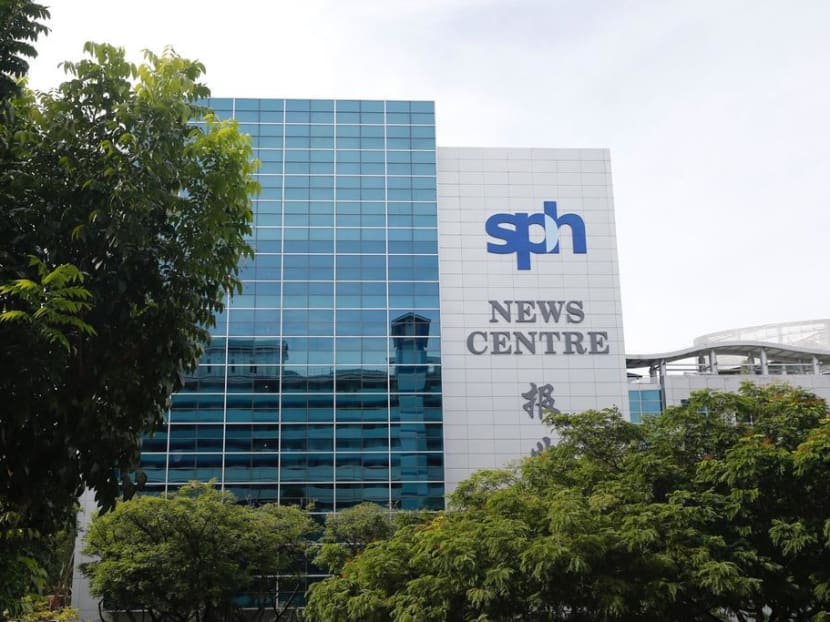Explainer: SPH shake-up — what is a ‘company limited by guarantee’ and how does a non-profit journalism model work?
SINGAPORE — Singapore Press Holdings (SPH) on Thursday (May 6) announced that it will be hiving off its media business arm into a not-for-profit entity, while it grapples with ongoing challenges of falling advertising revenue.
- Singapore Press Holdings announced that its media business will be hived off into a not-for-profit entity
- A company limited by guarantee is an entity that does not have share capital or shareholders
- Its members act as guarantor and can act on behalf of the company they oversee
- Media experts said the success of non-profit model depends on who is appointed guarantor
SINGAPORE — Singapore Press Holdings (SPH) on Thursday (May 6) announced that it will be hiving off its media business arm into a not-for-profit entity, while it grapples with ongoing challenges of falling advertising revenue.
With this move, its media business will eventually become a company limited by guarantee. This is expected to come to fruition by October, subject to shareholders’ approval.
Restructuring it into a company limited by guarantee, effectively a not-for-profit entity, will allow SPH’s media business to get funding from private and public sources, including extra financial support from the Government.
Later in the day, the Ministry of Communications and Information said that it supports SPH’s proposal and is prepared to provide funding for the not-for-profit entity.
TODAY takes a look at what this new model entails, and its potential impact on editorial independence.
WHAT IS A COMPANY LIMITED BY GUARANTEE?
A company limited by guarantee is an entity that does not have share capital or shareholders but, instead, has members who act as guarantors and agree to pay a nominal amount in the event that the company dissolves.
Organisations that run under such a model here include arts centres Esplanade and The Arts House.
Companies limited by guarantee here are registered with the Accounting and Regulatory Authority of Singapore and governed by the Companies Act.
They are usually set up by non-profit organisations requiring corporate status. Therefore, organisations that would typically set up as a company limited by guarantee are trade associations, religious bodies and charitable bodies.
A company limited by guarantee has a separate legal identity. It can carry out activities in the name of the company it oversees such as employing workers, borrowing credit, and buying and selling property.
EXAMPLES OF MEDIA COMPANIES RUN THIS WAY
While there are no examples here of media companies that have been run under the model of a company limited by guarantee, there have been examples of media organisations abroad that have successfully adopted such a funding structure.
One example is The Guardian, a news organisation from the United Kingdom.
Its sole shareholder is The Scott Trust. Founded in 1936, it exists to secure the financial and editorial independence of The Guardian.
On the news outlet's website, it is stated that shareholders of The Scott Trust take no dividend from the business and all of the media company’s profits are re-invested to support the trust’s core purpose.
Another example is the newspaper Tampa Bay Times in the United States, which is solely owned by the Poynter Institute for Media Studies, a non-profit journalism school.
The Poynter Institute receives funding from a broad variety of sources, including the Google News Initiative, the Charles Koch Foundation and Facebook.
HOW THEY SAFEGUARD EDITORIAL INDEPENDENCE
To safeguard the editorial independence of these media organisations, the trusts that oversee them typically put in place a set of values and principles that ensure journalistic freedom.
For instance, The Scott Trust stated on The Guardian’s website that its core purpose is to secure the financial and editorial independence of the publication in perpetuity. Therefore, all of its activities should be consistent with this central objective.
Attesting to this, media researcher Gavin Ellis wrote in his book, published in 2014 about trust ownership in media, that despite having editors within the ranks of The Scott Trust when it was first formed, it did not interfere in any way in the editorial direction of the publication.
Another publication run under as a company limited by guarantee is The Irish Times, an Irish daily broadsheet. It is run by the Irish Times Trust.
On its website, The Irish Times said that the trust was set up to ensure that the publication would be published as an independent newspaper with specific editorial objectives.
Some of the principles it detailed include ensuring that the news it publishes is accurate and as comprehensive as practicable, that it is presented fairly, and that commentary and opinion published are informed and responsible.
CHALLENGES OF RUNNING MODEL IN SINGAPORE
Media experts told TODAY that the success of the non-profit model in safeguarding editorial independence depends on the guarantors appointed and the values they choose to enshrine in the newsroom.
That being said, they pointed out that the model is not without its own stressors.
Dr Liew Kai Khuin, an independent media and culture researcher, said that unlike the commercial model, which depends on a wide range of advertisers for revenue, relying on a small concentrated pool of funders could make media companies more susceptible to influence as there is a pressure to want to continue receiving financial backing.
Agreeing, Dr Carol Soon, senior research fellow at the Institute of Policy Studies, said: “Non-profit newsrooms will have to provide compelling reasons for funders, who could be institutions and individuals such as philanthropic foundations, high-net worth individuals and readers, to provide financial backing and sustain their giving.
“For instance, foundations are more likely to provide sustained support if the beneficiary newsroom engages in issues they consider to be synergising with their priority,” she added.
Dr Soon said research in the US shows that foundations play a role in shaping the direction and priorities of non-profit newsrooms, such as what subjects and regions they should prioritise.
Still, communications professor Ang Peng Hwa from Nanyang Technological University said there are examples overseas that show that the non-profit model can be workable here.
He pointed to examples in the Scandinavian countries — Denmark, for instance — where the population of each country is around five million, like Singapore, and therefore face similar struggles in terms of finding ways to finance news sustainably.
These countries have made it work by appointing an independent third party to receive and distribute funds to news organisations, Prof Ang said.
“This is important because the governments cannot put pressure on the newspaper to cover them favourably, for example.”









